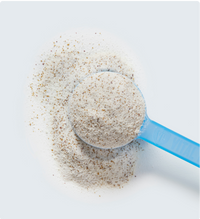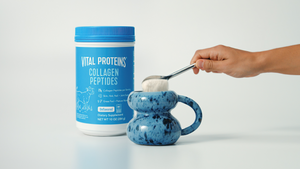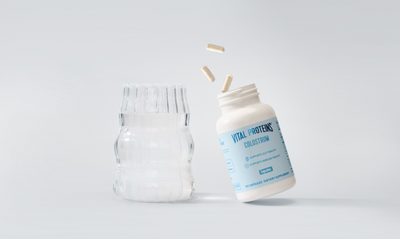Heather Marr is an NYC-based personal trainer and The Model Trainer Method creator, whose A-list client roster includes some of the world’s most famous supermodels. Ahead, she writes about the difference between muscle memory and muscle confusion.
We've all heard the terms "muscle memory" and "muscle confusion," but what are they and how are they different?
When we are talking about muscle memory what we are really talking about are nuclei and neurons. The muscles themselves don't actually have memories; that's not how it works.
To turn protein into muscle you need nuclei. When you train, you increase the number of nuclei in your muscle. The greater the number of nuclei, the more protein your body can turn into muscle. The golden rule is, if you don't use muscle, you lose muscle. When you cease training, your muscles atrophy (shrink/get smaller). We used to believe that the nuclei died as muscle atrophied. However, new evidence suggests that muscle nuclei do in fact still hang around.
Related Articles
This is why if your training was sidelined and you've been slacking at the gym, you may find it faster/easier to get back to your pre-inactivity strength/size. The increased muscle nuclei you previously added with your training is already there for protein synthesis.
We can use this to our advantage by getting active early in life and laying down the foundation for success then. If our circumstances change and our training is halted, we know our efforts were not in vain.

A Lesson in Muscle Memory
The second type of muscle memory actually occurs in the brain. When you first start training and are learning new exercises in the gym it can initially feel awkward. It takes time and practice to learn proper form and master movements. Once you become skilled at an exercise with repetition over time, it is stored in your procedural memory. It becomes automatic, feels natural and doesn't require the same focus it did while learning. These learned movements stored in our procedural memory are stored long-term. This is why even after a hiatus from your training routine you are still able to perform the exercises previously mastered.
This type of muscle memory is also extremely advantageous. If training is ceased, when it is finally resumed, you're by-passing the lengthy learning stage. That work has already been put in. A very common example of this is learning to ride a bike. It may take a few weeks or months to learn and get comfortable riding. Once you master the movements though, you know how to ride. If you put your bike away for a few years, when you do resume riding, you are able to skip that lengthy learning stage. It’s a skill and movement pattern already engrained.
What Is Muscle Confusion?
"Muscle confusion" does not exist. Muscle tissue will not and cannot get confused. The concept behind the term was that your body gets used to what you're doing, and it will plateau. If you do what you've always done, you'll get what you've always gotten. This is 100% true. Our bodies adapt to the workload given to them. If you perform the same exercises using the same weights for the same reps for example, you will inevitably plateau. To improve, you need to gradually increase the demand/stress on the body. Unfortunately, what has happened in some cases is people have heard this term and have moved away from intelligent programming for the sake of non-stop variety.
Rather than following programming in line with their goals, people are changing up their exercises and workouts too often to even master them. There are many ways to increase demand on the body. These include increasing your training volume, intensity or frequency. You should be constantly challenging yourself but do so intelligently and in line with your goals. Applying progressive overload to staple compound movements regularly in your programs, is a sure-fire way to move forward and achieve the goals you set for yourself. It’s all about training intelligently and setting yourself up for success.













